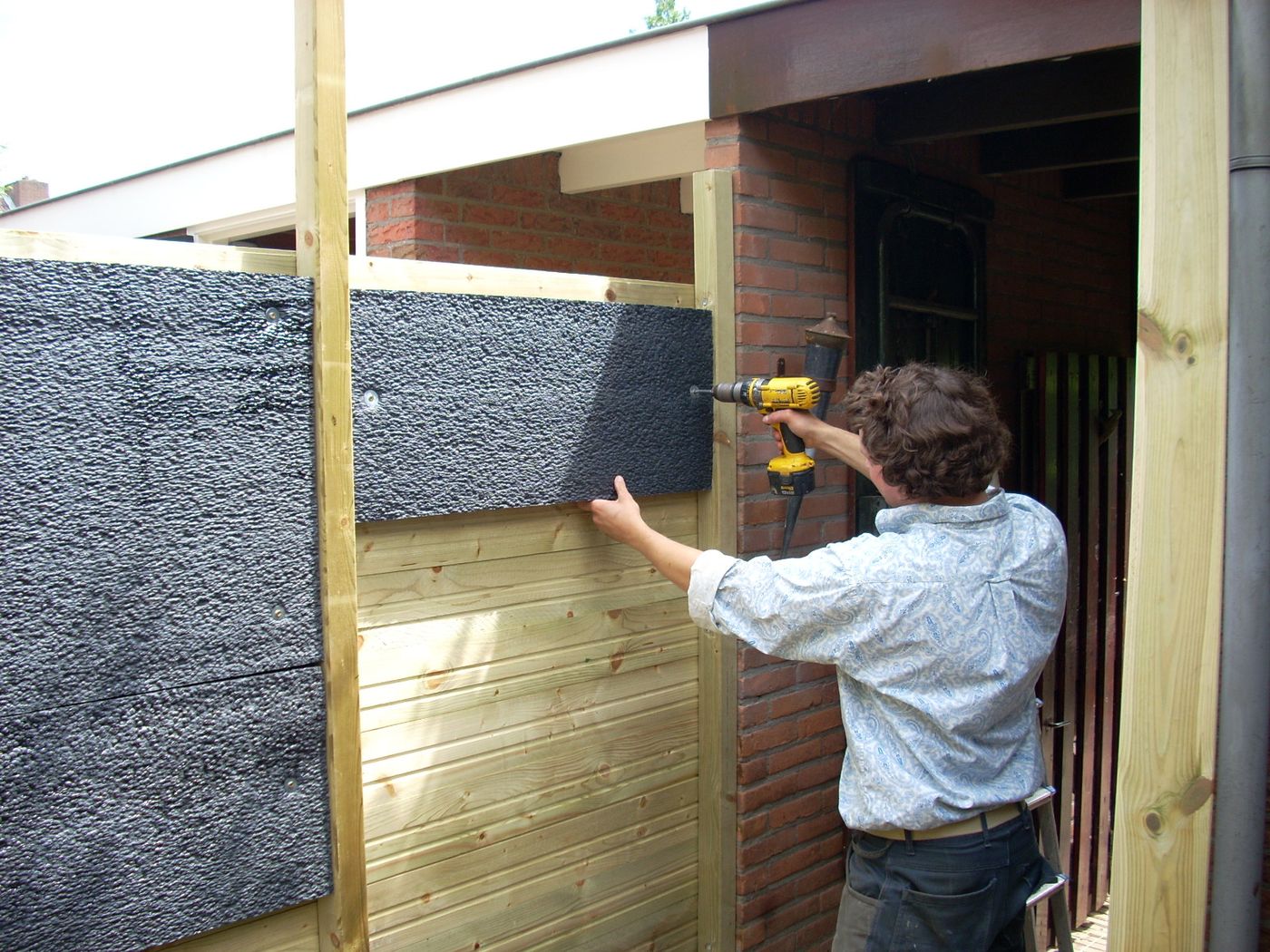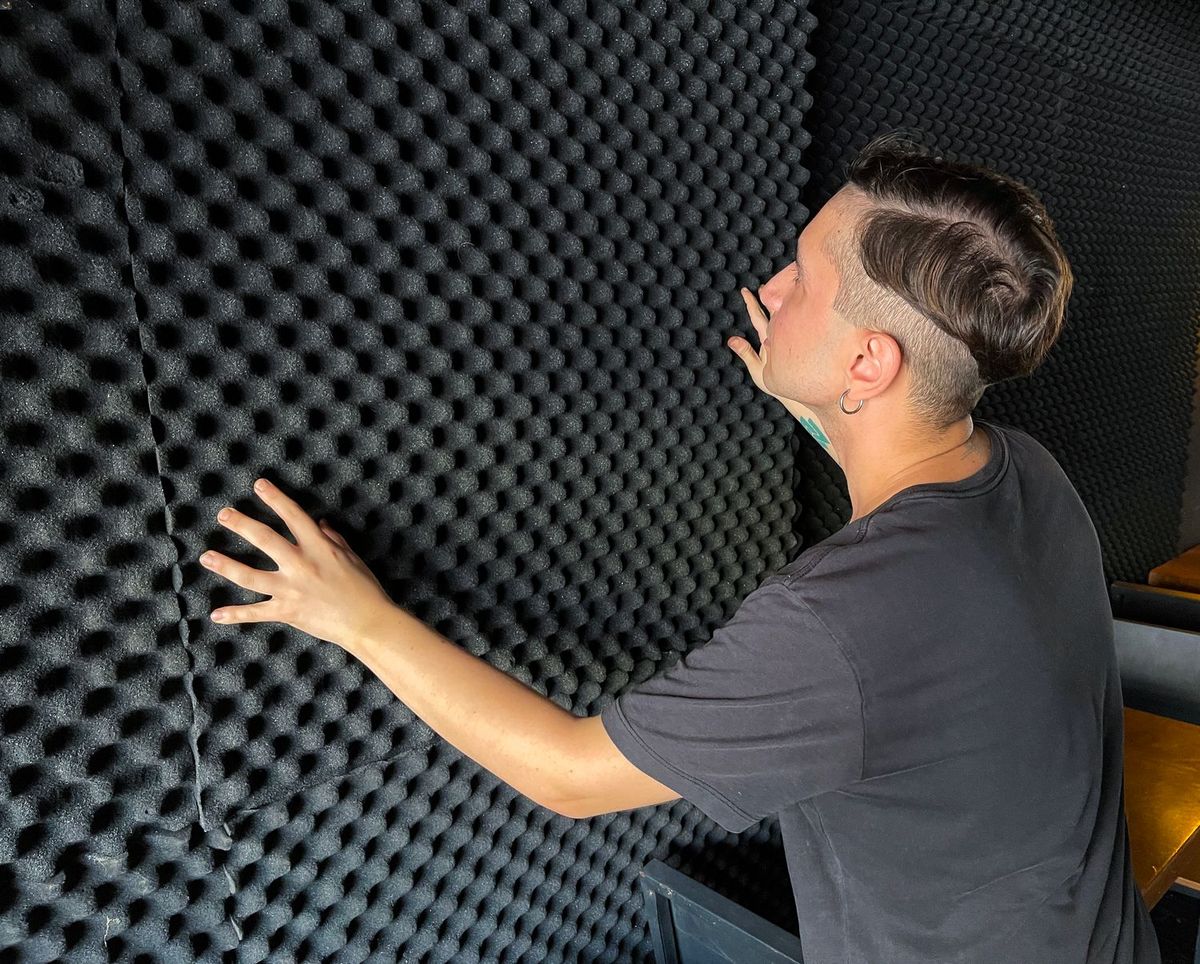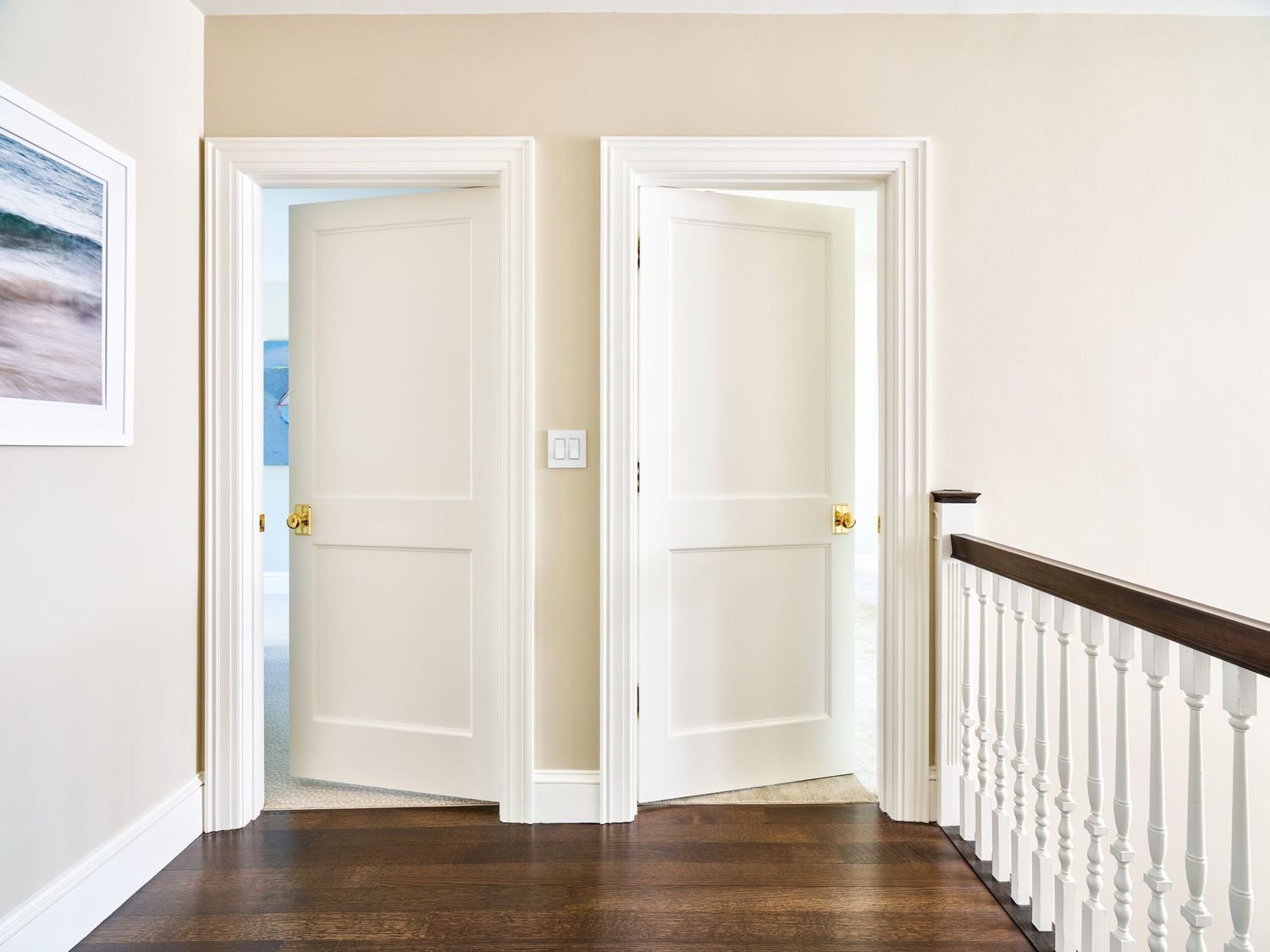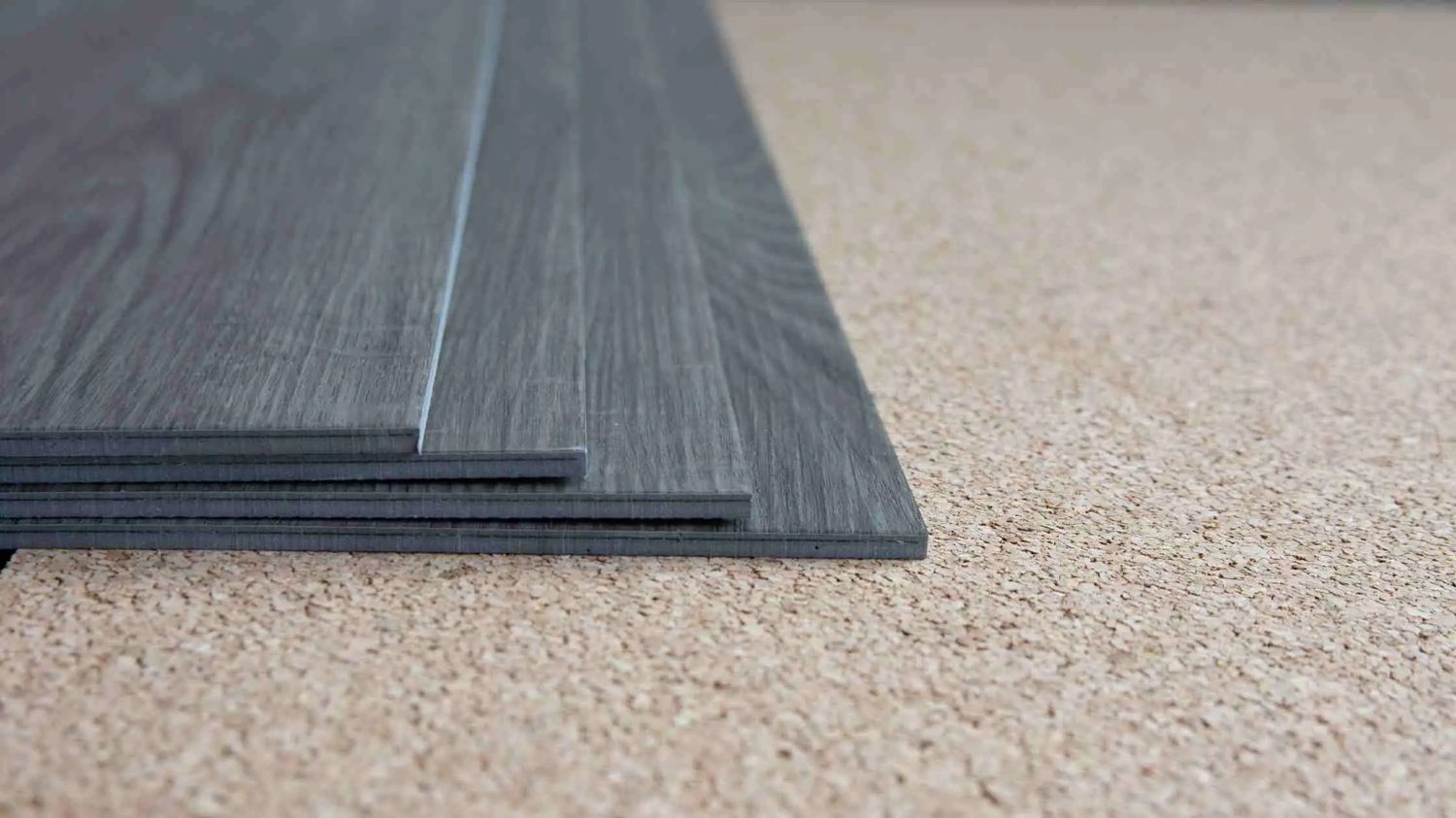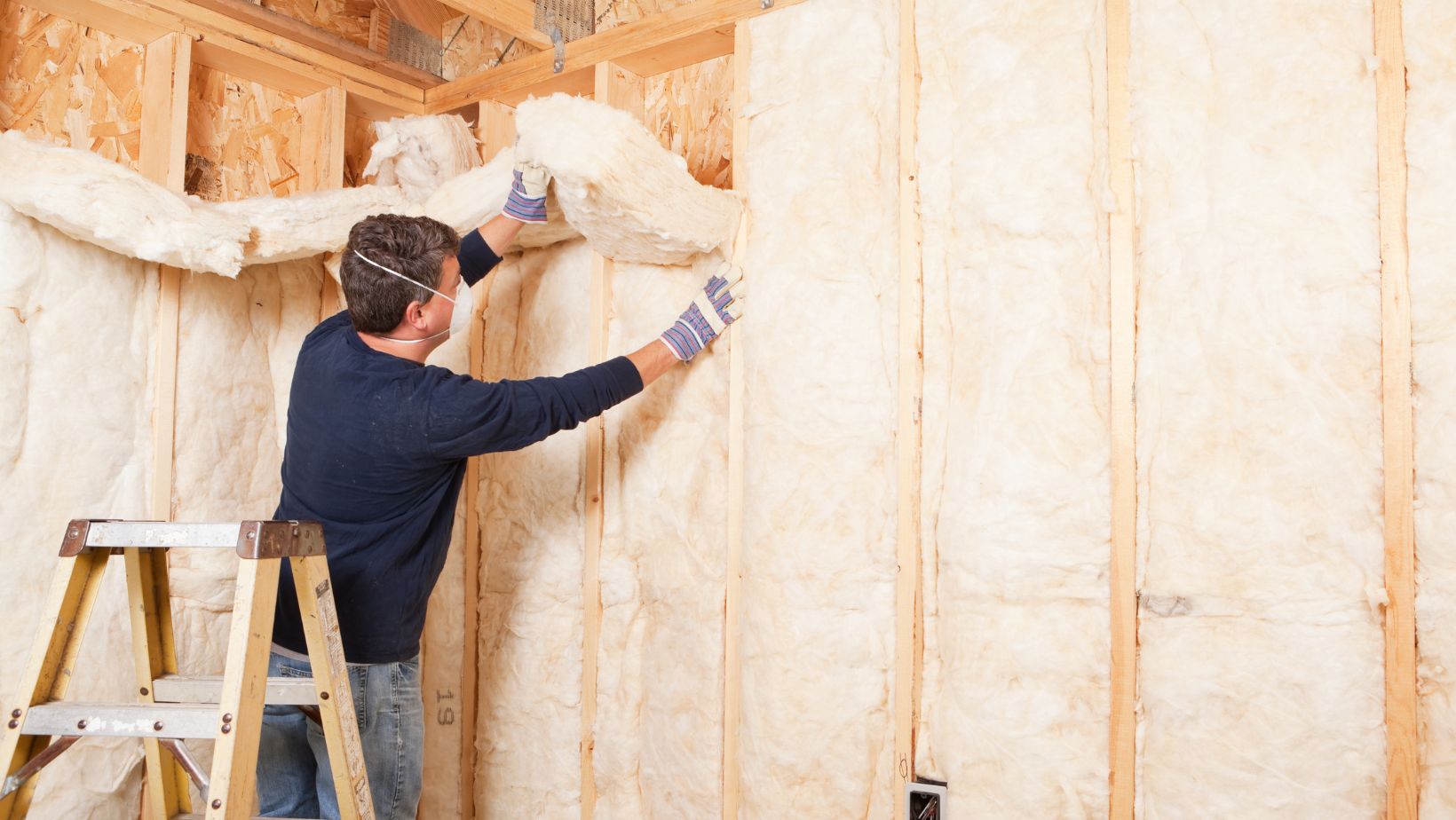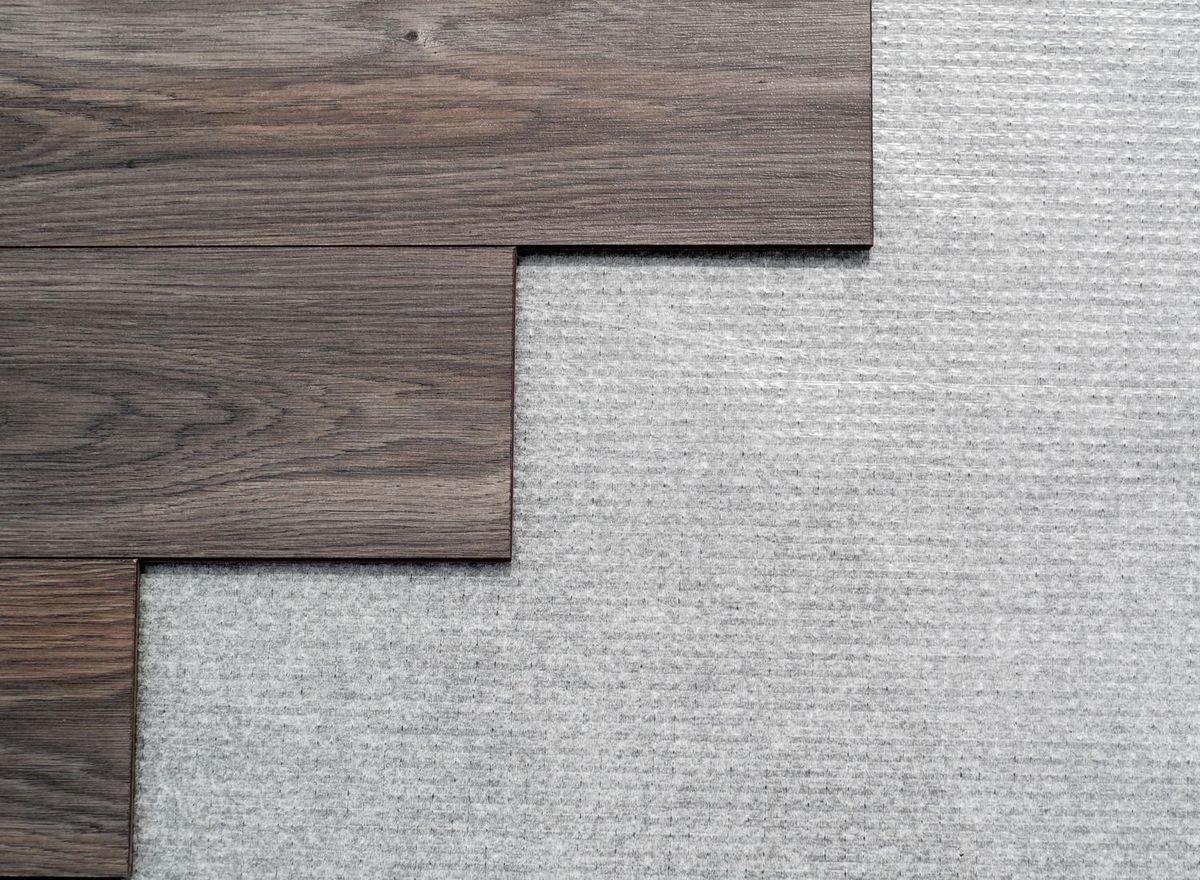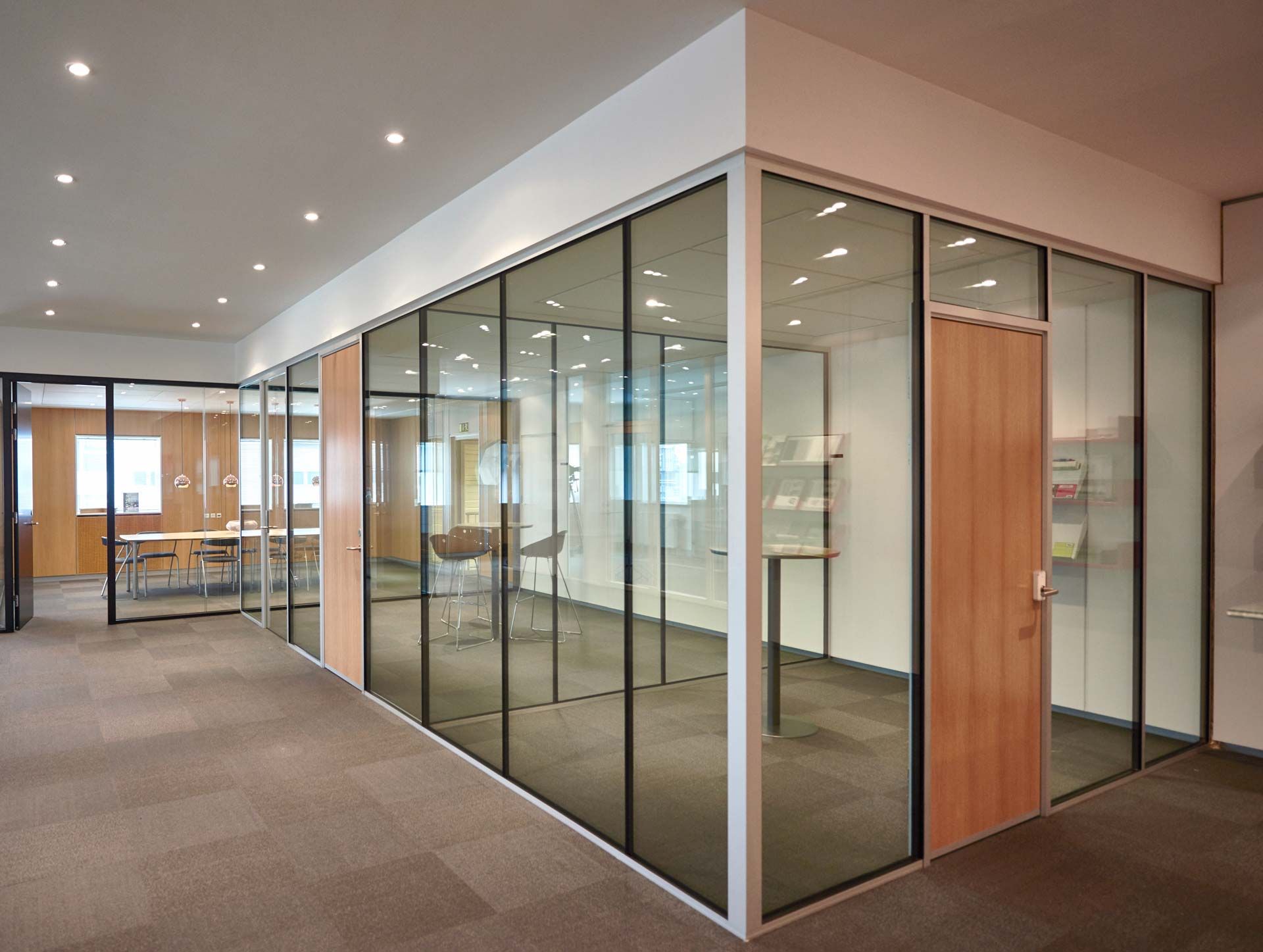Home>Production & Technology>Soundproofing>What Material Is Used For Soundproofing
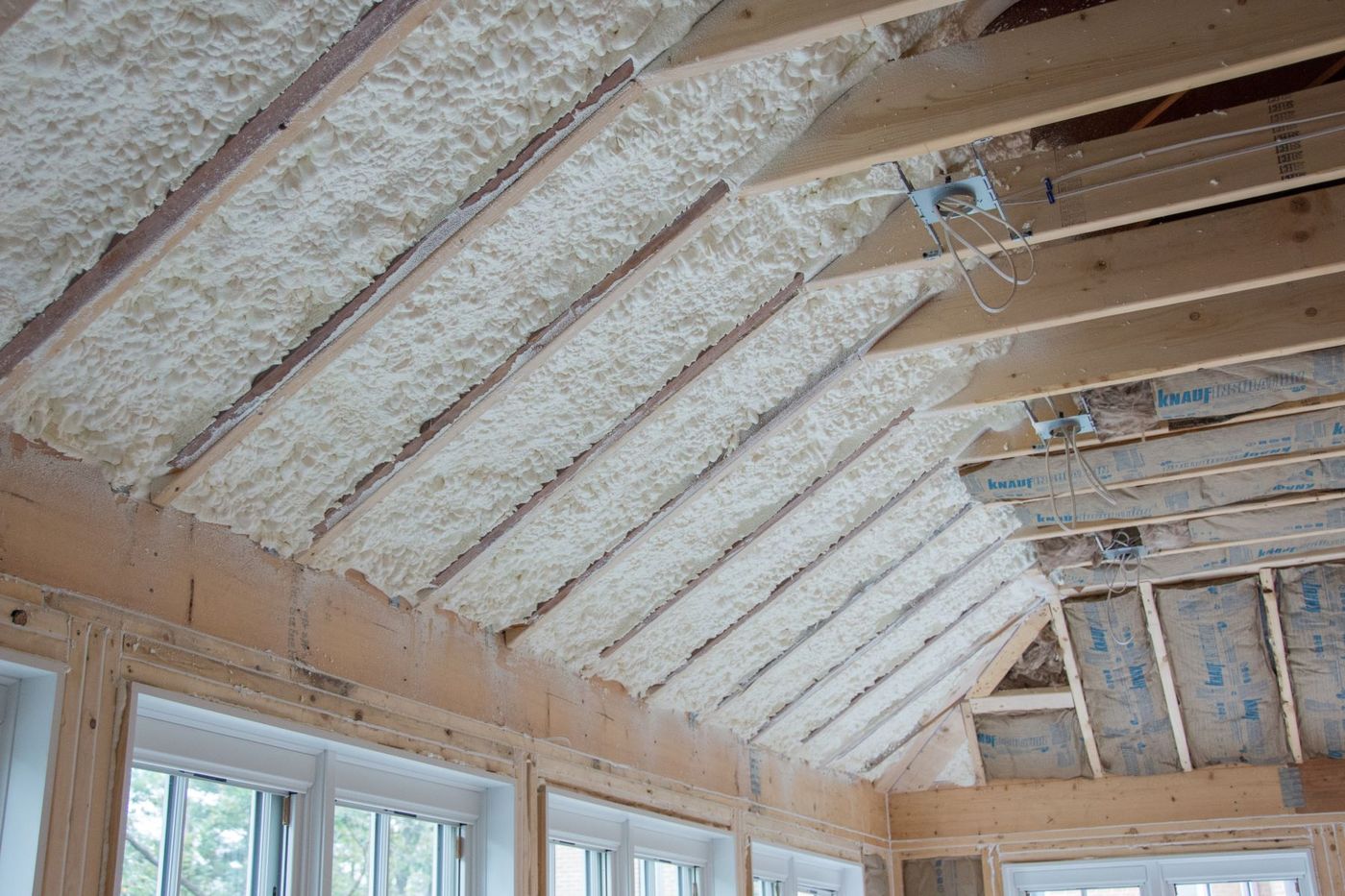

Soundproofing
What Material Is Used For Soundproofing
Modified: February 18, 2024
Discover the best materials for effective soundproofing and create a peaceful environment. Find out how to minimize noise with our soundproofing guide.
(Many of the links in this article redirect to a specific reviewed product. Your purchase of these products through affiliate links helps to generate commission for AudioLover.com, at no extra cost. Learn more)
Table of Contents
Introduction
Soundproofing is the practice of reducing or eliminating unwanted noise by utilizing materials that absorb, block, or isolate sound waves. Whether you live in a noisy urban area, work in a loud office environment, or simply desire peace and quiet in your own home, soundproofing can greatly improve your quality of life.
There are numerous materials available for soundproofing, each with its own unique properties and applications. By understanding the characteristics of these materials, you can make informed decisions on which ones to use to effectively soundproof your space.
In this article, we will explore ten commonly used materials for soundproofing and discuss their benefits and limitations. From acoustic foam to double glazing, these materials can help create a quiet and peaceful environment.
So, if you’re tired of noisy neighbors, intrusive traffic sounds, or loud office chatter, read on to discover the world of soundproofing and find the right materials to bring tranquility into your life.
Acoustic Foam
Acoustic foam is a popular choice for soundproofing due to its excellent sound absorption properties. It is made from open-cell polyurethane foam that helps to dampen and control sound waves.
One of the main advantages of acoustic foam is its ability to absorb high-frequency sound waves, reducing echoes and reverberation in a room. It is often used in recording studios, home theaters, and other spaces where clear and accurate sound reproduction is essential.
Acoustic foam comes in various shapes and sizes, including panels, tiles, and bass traps. These can be easily installed on walls, ceilings, or any other surfaces that contribute to sound reflection. The foam’s porous structure helps to break up sound waves and prevent them from bouncing back into the room.
It’s important to note that while acoustic foam is effective for absorbing high-frequency sounds, it may not provide significant reduction in low-frequency noise. For this reason, it is often used in combination with other materials to achieve optimal soundproofing results.
When installing acoustic foam, it’s crucial to cover a sufficient amount of surface area to maximize its effectiveness. Placing foam strategically around the room, particularly near sound sources and reflective surfaces, can yield the best results.
Overall, acoustic foam is an affordable and versatile soundproofing material that can greatly improve the acoustics of a room. Its ability to absorb high-frequency sound waves makes it an excellent choice for those looking to reduce echo and reverberation in their spaces.
Mass Loaded Vinyl (MLV)
Mass Loaded Vinyl (MLV) is a dense and flexible material that is commonly used for soundproofing. It is made from a combination of vinyl and other additives, which give it its excellent sound-blocking properties.
MLV is known for its ability to block both airborne and impact noises, making it a highly effective material for reducing sound transmission. It is often used in walls, floors, ceilings, and even car interiors to create a soundproof barrier.
One of the key advantages of MLV is its high mass-to-thickness ratio. This means that it can provide significant sound reduction while taking up minimal space. It is thin and flexible, allowing for easy installation in various areas without adding bulk.
To install MLV, it is typically hung or laid down in layers. It can be sandwiched between two layers of drywall or applied directly to surfaces using adhesive or nails. Additionally, MLV can also be used to line ductwork or enclose noisy machinery to prevent sound leakage.
Although MLV is effective at blocking sound, it’s important to note that no material can completely eliminate all sound transmission. MLV is most effective when used in combination with other soundproofing materials, such as acoustic foam or fiberglass insulation, to further enhance its soundproofing capabilities.
MLV is a versatile and durable material that offers great soundproofing benefits. Its ability to block both airborne and impact noises makes it a popular choice for anyone seeking to create a quieter and more peaceful environment.
Fiberglass Insulation
Fiberglass insulation is a commonly used material in both residential and commercial construction for its excellent thermal insulation properties. However, it also offers significant soundproofing benefits.
With its fluffy and lightweight composition, fiberglass insulation is an effective absorber of airborne sound waves. It works by trapping sound energy within its fibers, reducing the amount of sound that passes through walls, floors, or ceilings.
One of the advantages of fiberglass insulation is its versatility and ease of installation. It can be effortlessly inserted between wall studs, in ceiling cavities, or beneath flooring. It is available in various thicknesses and densities, allowing for customization based on the level of soundproofing desired.
When using fiberglass insulation for soundproofing, it’s important to choose insulation with a higher density. Dense fiberglass insulation will provide better sound absorption and blockage compared to lower-density variants.
It’s worth noting that fiberglass insulation is not as effective at blocking low-frequency sounds as it is at absorbing higher-frequency noises. For this reason, it is often recommended to combine fiberglass insulation with other soundproofing materials, such as mass loaded vinyl or acoustic foam, to achieve comprehensive soundproofing results.
Another aspect to consider when using fiberglass insulation is its potential health hazards. The tiny glass fibers can become airborne during installation, making proper protective gear, such as masks and gloves, essential to prevent respiratory issues.
Overall, fiberglass insulation is a cost-effective and versatile soundproofing material. Its ability to absorb airborne sound waves makes it a valuable component in creating a quieter and more comfortable living or working space.
Soundproof Curtains
Soundproof curtains, also known as acoustic curtains or noise-reducing curtains, are a practical and aesthetically pleasing solution for soundproofing windows, doors, and walls. These specially designed curtains are made with multiple layers of dense and insulating materials to block and absorb sound waves.
One of the key advantages of soundproof curtains is their ease of installation. Simply hanging them over windows or doors can significantly reduce noise infiltration from the outside. They are particularly effective in reducing high-frequency sounds, such as traffic noise or sirens.
Soundproof curtains work by incorporating dense materials, such as mass loaded vinyl or thick polyester fiberfill, into their construction. These materials help to disrupt sound waves and prevent them from passing through the curtain fabric.
In addition to sound absorption, soundproof curtains also offer thermal insulation and light-blocking properties. This makes them a versatile solution that improves both the acoustics and the overall comfort of a room.
It is important to note that while soundproof curtains can effectively reduce noise, they may not offer the same level of soundproofing as other materials, such as acoustic foam or mass loaded vinyl. However, they can be a great addition to existing soundproofing measures or for temporary noise reduction needs.
When choosing soundproof curtains, it is advisable to look for curtains with a high Sound Transmission Class (STC) rating. This rating indicates the effectiveness of the curtains in blocking sound. Additionally, curtains with heavy and tightly woven fabrics will provide better soundproofing results.
Soundproof curtains are a versatile and stylish option for enhancing soundproofing in any space. They offer an easy and affordable solution for reducing noise coming from outside sources and can significantly improve the overall acoustic environment in your home or office.
Soundproof Paint
Soundproof paint, also known as acoustic paint or noise-reducing paint, is a unique type of paint that contains special additives designed to dampen sound waves. While traditional paint is not typically known for its soundproofing capabilities, soundproof paint offers a supplementary layer of sound insulation.
Soundproof paint works by incorporating materials such as ceramic microspheres or acoustic minerals into its formulation. These additives help to absorb and scatter sound waves, reducing their amplitude and minimizing sound transmission through walls, ceilings, or other surfaces.
One of the key advantages of soundproof paint is its ease of application. It can be applied just like regular paint, with a brush or roller, and it can be used on a variety of surfaces, including drywall, wood, and concrete.
However, it’s important to note that the effectiveness of soundproof paint may not be as significant as other soundproofing materials, such as acoustic foam or mass loaded vinyl. It is best used as a supplementary measure in conjunction with other soundproofing techniques.
Soundproof paint is most effective at reducing mid to high-frequency sounds, such as voices or music. It may not provide substantial reduction in low-frequency noise, such as heavy machinery or thunder.
Another consideration when using soundproof paint is that it typically requires multiple coats for optimal results. Additionally, the surfaces must be properly prepped and cleaned before applying the paint to ensure proper adhesion and durability.
While soundproof paint may not completely eliminate all noise, it can be a valuable addition to soundproofing efforts, particularly in spaces where other soundproofing materials may not be practical or desirable.
Overall, soundproof paint offers a convenient and cost-effective option for enhancing sound insulation in any room. It provides an extra layer of sound absorption and can contribute to a quieter and more comfortable living or working environment.
Green Glue
Green Glue is a specialized soundproofing compound that is used to effectively reduce noise transmission through walls, ceilings, and floors. It is a viscoelastic material that transforms sound energy into heat, effectively dampening vibrations and preventing sound waves from passing through.
One of the main advantages of Green Glue is its ease of application. It comes in the form of a thick, paste-like substance that can be easily applied between layers of drywall, plywood, or other building materials. Simply sandwiching Green Glue between two layers of material creates an effective soundproof barrier.
The key component of Green Glue is its unique blend of polymers, which give it its viscoelastic properties. When this compound is applied and dries, it forms a flexible and resilient layer that helps to absorb and dissipate sound energy.
Green Glue is particularly effective at reducing both airborne and impact noise, making it a versatile soundproofing solution. It can effectively block sound from transmitting through walls, ceilings, or floors, ensuring a quieter and more peaceful environment.
When using Green Glue, it is essential to follow the manufacturer’s instructions for application. Ensuring proper coverage and allowing sufficient drying and curing time will optimize its soundproofing capabilities.
It’s worth noting that Green Glue is not a standalone soundproofing material and is most effective when used in conjunction with other soundproofing techniques. Combining Green Glue with materials like mass loaded vinyl, acoustic foam, or fiberglass insulation can yield comprehensive soundproofing results.
Overall, Green Glue offers a convenient and effective solution for soundproofing walls, ceilings, and floors. Its ability to absorb and dissipate sound energy makes it a popular choice among DIY enthusiasts and professionals alike.
Cork
Cork is a natural material that has gained popularity as a soundproofing solution due to its unique properties. Derived from the bark of the cork oak tree, cork is not only known for its sustainability but also for its excellent sound absorption capabilities.
One of the major advantages of cork as a soundproofing material is its ability to reduce both airborne and impact noise. When sound waves hit a cork surface, they are absorbed and converted into heat energy, preventing sound transmission through the material.
Cork is commonly used as a wall covering for its aesthetically pleasing appearance and soundproofing qualities. It can be applied in the form of cork boards or cork tiles, which can easily be installed on walls, ceilings, or floors.
In addition to its sound-absorbing properties, cork also offers thermal insulation and is resistant to moisture and mold growth. This makes it a versatile material suitable for various spaces, including homes, offices, and recording studios.
Cork is particularly effective in reducing high-frequency sounds, such as voices or footsteps, but it may not provide the same level of soundproofing for low-frequency noises, including heavy machinery or bass music.
It’s important to note that while cork can significantly improve sound insulation, it is often used in combination with other soundproofing materials for optimal results. Pairing cork with materials like mass loaded vinyl or acoustic foam can create a more comprehensive soundproofing solution.
Overall, cork is a natural and sustainable option for soundproofing. Its sound-absorbing properties, along with its eco-friendliness and versatility, make it a popular choice for those seeking to create a quieter and more comfortable environment.
Soundproof Drywall
Soundproof drywall, also known as acoustic or sound control drywall, is a specialized type of drywall that is designed to enhance sound insulation in buildings. It is made by incorporating sound-dampening materials into the gypsum core of the drywall, resulting in improved soundproofing properties compared to traditional drywall.
One of the main advantages of soundproof drywall is its ability to effectively reduce both airborne and impact noise. It works by absorbing sound energy and preventing sound waves from passing through the material, thus minimizing sound transmission between rooms or from external sources.
Soundproof drywall is commonly used in spaces that require superior sound insulation, such as home theaters, recording studios, or bedrooms. It is also suitable for office environments where privacy and concentration are crucial.
When it comes to installation, soundproof drywall is typically installed in the same manner as regular drywall, with screws or nails. However, it’s essential to follow the manufacturer’s instructions for proper installation and ensure that seams and joints are properly sealed to maintain the integrity of the soundproofing barrier.
While soundproof drywall is effective in reducing airborne noise, it may not provide the same level of attenuation for low-frequency sounds as other materials, such as mass loaded vinyl or cork. Therefore, incorporating additional soundproofing materials in conjunction with soundproof drywall is often recommended for optimal results.
It’s worth mentioning that soundproof drywall can be heavier and denser than regular drywall due to its unique composition. This may require additional support or reinforcement during installation.
In summary, soundproof drywall is a specialized option for enhancing sound insulation in buildings. Its ability to reduce both airborne and impact noise makes it a valuable addition to any space where sound control and privacy are essential.
Double Glazing
Double glazing, also known as insulated or thermal windows, is a popular choice for soundproofing and improving energy efficiency in homes and buildings. It involves the use of two glass panes separated by a layer of air or gas, creating an insulation barrier that helps reduce noise transmission.
One of the main advantages of double glazing for soundproofing is its ability to block both airborne and impact noise. The two layers of glass and the air or gas-filled space in between act as a sound barrier, preventing sound waves from passing through.
When sound waves hit the window, they lose their energy as they travel through the layers of glass and the air gap. This results in a significant reduction in noise transfer from the outside to the inside of the building.
Double glazing is particularly effective at reducing high-frequency noises such as traffic or neighbor conversations. It also offers additional benefits, such as improved thermal insulation and enhanced energy efficiency by reducing heat loss or gain.
It’s important to note that the thickness of the glass and the size of the air or gas-filled space between the glass panes can affect the soundproofing performance. Thicker glass and wider air gaps generally provide better sound insulation.
While double glazing is an effective soundproofing solution, it may not completely eliminate all noise. To enhance its soundproofing capabilities, it is often recommended to combine double glazing with other soundproofing methods, such as using soundproof curtains or installing acoustic seals around windows.
Overall, double glazing is a practical and efficient way to reduce noise and improve comfort in homes and buildings. It provides both soundproofing and energy-saving benefits, making it a desirable option for those seeking a quieter and more energy-efficient living or working space.
Resilient Channels
Resilient channels are a valuable soundproofing solution used to minimize sound transmission through walls and ceilings. These channels are designed to create an air gap between the surface and the structure, effectively reducing the transfer of airborne noises.
The channels are made of metal or specialized sound-damping materials and are attached horizontally to the wall studs or ceiling joists. The primary purpose of resilient channels is to decouple the drywall or other surface material from the structure, preventing sound vibrations from traveling through.
Resilient channels work by absorbing sound energy and reducing its transmission. When sound waves hit the wall surface, they vibrate the resilient channels instead of directly transferring through the wall structure. This helps to significantly reduce the amount of sound that reaches the other side of the wall or ceiling.
One of the key advantages of using resilient channels is their ability to address both airborne and impact noise. They are particularly effective in reducing noises such as footsteps, music, and voices from adjacent rooms or floors.
It’s important to note that resilient channels are typically used in combination with other soundproofing materials, such as insulation or double drywall, to achieve optimal results. This comprehensive approach helps to minimize sound transmission and create a more soundproof space.
When installing resilient channels, it’s crucial to follow the manufacturer’s instructions and guidelines. Proper spacing, attaching securely to the studs or joists, and making sure the channels are level are essential for maximizing their soundproofing capabilities.
In summary, resilient channels are a valuable component in soundproofing walls and ceilings. Their ability to decouple the surface material from the structure helps to reduce sound transmission and create a quieter environment. When used in conjunction with other soundproofing materials, resilient channels can greatly enhance the overall soundproofing performance of a space.
Conclusion
Soundproofing is an essential consideration for anyone looking to create a quiet and peaceful environment. By understanding the various soundproofing materials available, you can effectively reduce unwanted noise and improve your quality of life.
In this article, we explored ten commonly used soundproofing materials, each with its unique properties and applications. From acoustic foam and mass loaded vinyl to soundproof curtains and resilient channels, these materials offer different approaches to soundproofing, addressing various types of noise and sound frequencies.
While each material has its benefits and limitations, it’s important to note that soundproofing is often most effective when multiple techniques and materials are used in combination. This comprehensive approach helps to create layers of sound insulation, tackling airborne and impact noises from various angles.
When implementing soundproofing measures, it’s also crucial to consider factors such as room layout, construction materials, and the specific noise sources you want to address. Proper installation and coverage of soundproofing materials are essential to achieve optimal results.
Whether you’re dealing with noisy neighbors, loud office environments, or traffic sounds, soundproofing materials can help create a more peaceful and comfortable space. From residential homes to commercial buildings, soundproofing solutions are available for a variety of applications.
Remember, soundproofing is not only about reducing noise but also about improving acoustics and creating a more pleasant environment. By incorporating the right soundproofing materials and techniques, you can enjoy a quieter and more enjoyable space, free from the distractions of unwanted noise.
So, if you’re ready to take control of your acoustic environment, consider the soundproofing materials discussed in this article and start your journey to a quieter, more peaceful space today.

